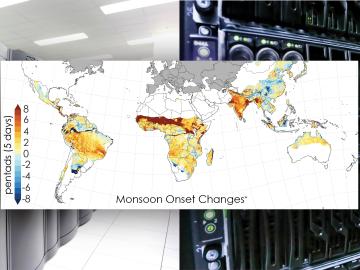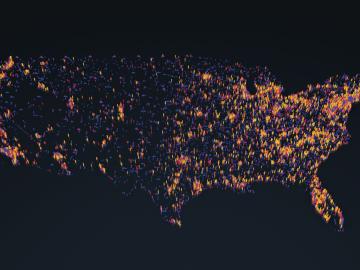
Filter News
Area of Research
- (-) Fusion and Fission (10)
- (-) Materials Under Extremes (1)
- (-) National Security (13)
- (-) Nuclear Science and Technology (5)
- (-) Supercomputing (72)
- Advanced Manufacturing (10)
- Biology and Environment (109)
- Biology and Soft Matter (1)
- Building Technologies (2)
- Computational Engineering (1)
- Computer Science (4)
- Electricity and Smart Grid (1)
- Energy Science (170)
- Energy Sciences (1)
- Functional Materials for Energy (1)
- Fusion Energy (3)
- Isotope Development and Production (1)
- Isotopes (3)
- Materials (102)
- Materials Characterization (1)
- Materials for Computing (18)
- Mathematics (1)
- Neutron Science (36)
- Quantum information Science (1)
- Transportation Systems (2)
News Topics
- (-) Environment (28)
- (-) Frontier (33)
- (-) Materials Science (24)
- (-) Transportation (10)
- 3-D Printing/Advanced Manufacturing (12)
- Advanced Reactors (19)
- Artificial Intelligence (46)
- Big Data (25)
- Bioenergy (12)
- Biology (15)
- Biomedical (20)
- Biotechnology (3)
- Buildings (5)
- Chemical Sciences (9)
- Composites (1)
- Computer Science (106)
- Coronavirus (16)
- Critical Materials (4)
- Cybersecurity (23)
- Education (1)
- Energy Storage (12)
- Exascale Computing (27)
- Fossil Energy (1)
- Fusion (32)
- Grid (13)
- High-Performance Computing (46)
- Isotopes (8)
- ITER (6)
- Machine Learning (24)
- Materials (18)
- Mathematics (2)
- Microscopy (8)
- Molten Salt (5)
- Nanotechnology (12)
- National Security (36)
- Neutron Science (20)
- Nuclear Energy (67)
- Partnerships (8)
- Physics (12)
- Polymers (2)
- Quantum Computing (20)
- Quantum Science (26)
- Security (15)
- Simulation (19)
- Software (1)
- Space Exploration (8)
- Summit (43)
Media Contacts

Scientists from the Department of Energy’s Oak Ridge National Laboratory and a dozen other international research institutions have produced the most elaborate set of projections to date that illustrates possible futures for major monsoon regions.

The Department of Energy’s Office of Science has selected three Oak Ridge National Laboratory scientists for Early Career Research Program awards.

Scientists at the Department of Energy Manufacturing Demonstration Facility at ORNL have their eyes on the prize: the Transformational Challenge Reactor, or TCR, a microreactor built using 3D printing and other new approaches that will be up and running by 2023.

Research by an international team led by Duke University and the Department of Energy’s Oak Ridge National Laboratory scientists could speed the way to safer rechargeable batteries for consumer electronics such as laptops and cellphones.

OAK RIDGE, Tenn., May 5, 2020 — By 2050, the United States will likely be exposed to a larger number of extreme climate events, including more frequent heat waves, longer droughts and more intense floods, which can lead to greater risks for human health, ecosystem stability and regional economies.

We have a data problem. Humanity is now generating more data than it can handle; more sensors, smartphones, and devices of all types are coming online every day and contributing to the ever-growing global dataset.

A novel approach developed by scientists at ORNL can scan massive datasets of large-scale satellite images to more accurately map infrastructure – such as buildings and roads – in hours versus days.

The prospect of simulating a fusion plasma is a step closer to reality thanks to a new computational tool developed by scientists in fusion physics, computer science and mathematics at ORNL.

An international team of researchers has discovered the hydrogen atoms in a metal hydride material are much more tightly spaced than had been predicted for decades — a feature that could possibly facilitate superconductivity at or near room temperature and pressure.

Scientists at have experimentally demonstrated a novel cryogenic, or low temperature, memory cell circuit design based on coupled arrays of Josephson junctions, a technology that may be faster and more energy efficient than existing memory devices.


